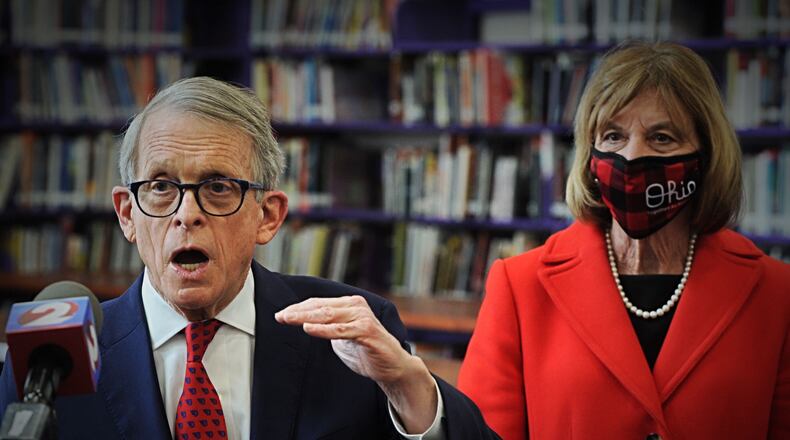“When Ohio gets down to 50 cases per 100,000 people for two weeks, all health orders will be lifted,” he said.
He said that the state reported 731 cases per 100,000 people on Dec. 3. By Feb. 3, that had dropped to 445 cases. On Tuesday, it had fallen to 179 cases.
”We can do this,” he said.
DeWine addressed the state on the status of the coronavirus in the evening instead of his regularly scheduled 2 p.m. briefing. He began his address by noting that March 4, 2020, was Ohio’s first full day in the fight against the coronavirus.
It’s been a year since DeWine took his first actions in response to the virus. Last March, he announced restrictions at the Arnold Sports Festival in Columbus, including closing the event to spectators.
Less than a week later, Ohio reported its first cases of COVID-19, prompting DeWine to declare a state of emergency.
Since then, Ohio has recorded 974,480 cases, 50, 695 hospitalizations and 16,750 deaths due to the virus, according to the Ohio Department of Health.
Public health orders that would be lifted once Ohio meets the threshold of 50 cases or fewer per 100,000 Ohioans include wearing masks in public spaces, six feet of social distancing and capacity reductions for businesses.
“We are now in the offense in this virus,” DeWine said, with COVID-19 vaccines — which he called the most powerful weapon against this disease — available in every community.
“To date we have vaccinated over 1.8 million Ohioans,” he said, with cases in nursing homes down to one-tenth of what they were at the height of the coronavirus outbreak.
DeWine said the state has been a leader in getting children back in the classroom and vaccinating educators, older Ohioans and those with developmental disabilities.
Because Ohio has made progress in reducing case numbers, the curfew has been lifted, there are no stay-at-home orders in place, and restaurants, bars and gyms are back open.
However, DeWine said now is not the time to become complacent.
“The end of our fight is in view but we must continue this vital mission … we must resist this urge (to let up) and we must fight to the very end.”
About the Author

